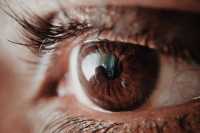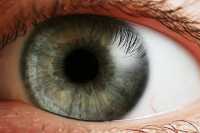More than 150 million Americans wear corrective spectacles and lenses. This eyewear helps Americans compensate for refractive errors. The most common of them are nearsightedness, farsightedness, and astigmatism.
When do errors arise? They happen when an eye does not refract the light to concentrate on the retina. This occurs because of the cornea’s form. If you wear lenses or glasses, understanding LASIK vs SMILE surgery is for you.
Author Interviews, Ophthalmology, Technology / 01.04.2022
Breakthrough for Nearsightedness: Removable Lens Implant Can Provide Freedom from Glasses or Contacts
MedicalResearch.com Interview with:
Scott D. Barnes, MD
Chief Medical Officer
STAAR Surgical
 MedicalResearch.com: What is the background for the EVO procedure? Would you briefly describe what is meant by myopia and how common it is?
Response: EVO is a clinically-proven implantable lens that corrects common vision problems such as nearsightedness and nearsightedness with astigmatism. EVO can be the solution for people who want to get rid of their glasses or contact lenses. Myopia (or nearsightedness) is the most common ocular disorder worldwide and its incidence is increasing significantly. An estimated 30% of the world's population, or 2.6 billion people, have myopia and this number is projected to rise to 50% of the global population by the year 2050.
(more…)
MedicalResearch.com: What is the background for the EVO procedure? Would you briefly describe what is meant by myopia and how common it is?
Response: EVO is a clinically-proven implantable lens that corrects common vision problems such as nearsightedness and nearsightedness with astigmatism. EVO can be the solution for people who want to get rid of their glasses or contact lenses. Myopia (or nearsightedness) is the most common ocular disorder worldwide and its incidence is increasing significantly. An estimated 30% of the world's population, or 2.6 billion people, have myopia and this number is projected to rise to 50% of the global population by the year 2050.
(more…)
 MedicalResearch.com: What is the background for the EVO procedure? Would you briefly describe what is meant by myopia and how common it is?
Response: EVO is a clinically-proven implantable lens that corrects common vision problems such as nearsightedness and nearsightedness with astigmatism. EVO can be the solution for people who want to get rid of their glasses or contact lenses. Myopia (or nearsightedness) is the most common ocular disorder worldwide and its incidence is increasing significantly. An estimated 30% of the world's population, or 2.6 billion people, have myopia and this number is projected to rise to 50% of the global population by the year 2050.
(more…)
MedicalResearch.com: What is the background for the EVO procedure? Would you briefly describe what is meant by myopia and how common it is?
Response: EVO is a clinically-proven implantable lens that corrects common vision problems such as nearsightedness and nearsightedness with astigmatism. EVO can be the solution for people who want to get rid of their glasses or contact lenses. Myopia (or nearsightedness) is the most common ocular disorder worldwide and its incidence is increasing significantly. An estimated 30% of the world's population, or 2.6 billion people, have myopia and this number is projected to rise to 50% of the global population by the year 2050.
(more…)
Author Interviews, Ophthalmology, PLoS / 20.01.2022
Study Finds Near-Sightedness (Myopia) Increases with Education and Greater Close Work
MedicalResearch.com Interview with:
Prof. Jugnoo S Rahi
Professor of Ophthalmic Epidemiology and Honorary Consultant Ophthalmologist
NIHR Senior Investigator
Head, Vision and Eyes Group UCL
HeadPopulation Policy and Practice Research and Teaching Department GOS ICH UCL
Director, Ulverscroft Vision Research Group
GOS Institute of Child Health UCL /
Great Ormond Street Hospital NHS Foundation Trust
Institute of Ophthalmology UCL /
NIHR Moorfields Biomedical Research Centre
Chair, Academic Committee
Chair, British Ophthalmological Surveillance Unit Executive Committee
Royal College of Ophthalmologists
MedicalResearch.com: What is the background for this study?
Response: We hypothesised that if changing environmental factors, in particular educational experience, are accounting for increasing frequency of myopia in the UK, a cohort effect would be discernible in changing associations with myopia, with different profiles for childhood and adult-onset forms. We investigated this using the UK Biobank Study, a unique large contemporary adult population sample whose members, born over a period of more than three decades, have undergone a detailed ophthalmic examination. This affords the opportunity to analyse ‘historical’ cohorts covering a period of important socio-demographic, economic, and educational change in the UK from which current and emerging trends may be identified and examined.
Drawing on our previous proof-of-concept study, we investigated whether there were differences between childhood-onset versus adult-onset myopia in temporal trends in both frequency and severity and in associations with key environmental factors.
(more…)
Author Interviews, Genetic Research, JAMA, Ophthalmology / 02.11.2019
Association Between Polygenic Risk Score and Risk of Myopia
MedicalResearch.com Interview with:
 Professor Jeremy A. Guggenheim
School of Optometry & Vision Sciences
Cardiff University, UK
MedicalResearch.com: What is the background for this study?
Response: Near-sightedness (myopia) usually develops during childhood and necessitates the use of glasses or contact lenses to correct blurry distance vision. It is also a risk factor for sight-threatening disorders such as glaucoma, retinal detachment and macular degeneration. Promising treatments designed to slow the progression of myopia are becoming available. Building on previous research suggesting that some individuals are genetically predisposed to near-sightedness, we investigated whether a genetic test could identify children at risk of developing myopia. (more…)
Professor Jeremy A. Guggenheim
School of Optometry & Vision Sciences
Cardiff University, UK
MedicalResearch.com: What is the background for this study?
Response: Near-sightedness (myopia) usually develops during childhood and necessitates the use of glasses or contact lenses to correct blurry distance vision. It is also a risk factor for sight-threatening disorders such as glaucoma, retinal detachment and macular degeneration. Promising treatments designed to slow the progression of myopia are becoming available. Building on previous research suggesting that some individuals are genetically predisposed to near-sightedness, we investigated whether a genetic test could identify children at risk of developing myopia. (more…)
 Professor Jeremy A. Guggenheim
School of Optometry & Vision Sciences
Cardiff University, UK
MedicalResearch.com: What is the background for this study?
Response: Near-sightedness (myopia) usually develops during childhood and necessitates the use of glasses or contact lenses to correct blurry distance vision. It is also a risk factor for sight-threatening disorders such as glaucoma, retinal detachment and macular degeneration. Promising treatments designed to slow the progression of myopia are becoming available. Building on previous research suggesting that some individuals are genetically predisposed to near-sightedness, we investigated whether a genetic test could identify children at risk of developing myopia. (more…)
Professor Jeremy A. Guggenheim
School of Optometry & Vision Sciences
Cardiff University, UK
MedicalResearch.com: What is the background for this study?
Response: Near-sightedness (myopia) usually develops during childhood and necessitates the use of glasses or contact lenses to correct blurry distance vision. It is also a risk factor for sight-threatening disorders such as glaucoma, retinal detachment and macular degeneration. Promising treatments designed to slow the progression of myopia are becoming available. Building on previous research suggesting that some individuals are genetically predisposed to near-sightedness, we investigated whether a genetic test could identify children at risk of developing myopia. (more…)
Author Interviews, Ophthalmology / 14.10.2019
Astigmatism Varies Among Age, Gender, Ethnic and Education Groups
MedicalResearch.com Interview with:
Sumayya Ahmad, MD
Assistant Professor of Ophthalmology
Icahn School of Medicine at Mount Sinai
MedicalResearch.com: What is the background for this study?
Response: The cornea is usually curved like a basketball or a globe. Roughly all of the edges are about equal distant from the center. With this shape, light enters the eye normally and the image is not distorted. However, not all eyes are shaped that way.
About 30% of eyes have astigmatism, in which the cornea is shaped like a football, or elongated in one axis. If the longest diameter is up and down, we call that with the rule astigmatism, and if it is to the side, we call that against-the rule astigmatism.
A lot of studies have been devoted to astigmatism over the years, but nobody has looked at it from a population perspective in the United States and tried to figure out the relationships it may have. Most studies are from one center or other country's databases, but not ours. The National Health and Nutrition Examination Survey, or NHANES, is a survey composed in the United States each year that looks at a representative sample of people from across the country. It's a great way to study the relationship between the environment and people. We tried to look at demographic factors (like age, gender, race) and ocular factors related to against and with the rule astigmatism.
(more…)
Author Interviews, Columbia, Environmental Risks, Genetic Research, Ophthalmology, PLoS / 09.10.2018
Why Are So Many People Near-Sighted?
MedicalResearch.com Interview with:
Andrei V. Tkatchenko, M.D., Ph.D.
Associate Professor
Columbia University Medical Center
Edward S. Harkness Eye Institute
New York, NY 10032
MedicalResearch.com: What is the background for this study? What are the main findings?
Response: Clear distance vision is rapidly becoming a rare privilege around the world, especially in Asia, due to increasing prevalence of myopia.
Although much effort has been directed towards elucidating the mechanisms underlying refractive eye development and myopia, treatment options for myopia are mostly limited to optical correction, which does not prevent progression of myopia or pathological blinding complications often associated with the disease. During early childhood development, the axial length of the eye normally grows to match its optical power in a process called emmetropization, producing focused images on the retina. However, very often environmental and genetic factors lead to a mismatch between the optical power of the eye and its axial length resulting in the development of myopia if eyes grow too long for their optical power. Experimental studies in many animal species suggest that emmetropization is regulated by optical defocus. The eye can compensate for imposed negative and positive optical defocus by increasing or decreasing its growth rate, respectively. However, the molecular mechanisms underlying emmetropization are poorly understood which prevents development of anti-myopia drugs.
(more…)




